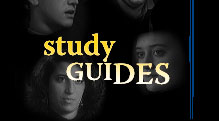WORKING WITH CHALLENGING SITUATIONS
Racism is often difficult to talk about in our culture. It elicits strong feelings and very different perspectives. The following are suggestions for ways to respond effectively to situations that might occur.
Contributed by Sheri Schmidt (from the TALKING ABOUT RACE Facilitation Guide)
Arguments > Interrupt the argument and take this opportunity to point out that this difference of opinion comes out of different life experiences and represents what we mean by “diversity.” Remind participants that we all see things from different perspectives and although this can get in our way at times, this difference of perspective is also one of the most valuable parts of diversity. Remind the group about the discussion ground rules which they all agreed upon. Then allow the discussion to continue.
Dominating the Discussion > Intervene and point out that the discussion should benefit from the input of many people. Mention that any discussion about differences is most valuable when many perspectives are expressed. You could suggest several strategies including having a different person answer each time.
One-sided Discussions > If you sense that there are opposing views which participants are reluctant to express, but could benefit the discussion, welcome them to share by making a comment like, “I could really see how someone might feel that…”
Speech-making > Try not to allow participants to ramble and preach to the rest of the group. One way to handle this is to direct the participant to express what they have learned from this experience, to deal with the here and now.
Unclear Statements > Encourage the participant to elaborate on their point by asking him or her to site specific examples.
Emotional Outbursts > Allow the participant to express themselves then validate what they have said by restating what you heard.
Difficult Questions or Comments (contributed by Hugh Vasquez) Often during discussions questions or comments will be raised that are challenging to us as facilitators. The following are examples of comments made by audiences that may be difficult to handle. Of course, what is challenging for one facilitator is not necessarily difficult for another. What was easy for you to handle yesterday might be hard today. It is important for you to think about what might be difficult for you before it occurs and think about your responses. Use the following to stimulate your thinking about what might be difficult for you. (Reading the section of this guide on Background on Issues may also help equip you with responses.)
Possible challenging comments
“This makes me realize we haven’t come very far in this society… all the work done in the civil rights days was a waste.”
“The film made me feel guilty.”
“I’m so tired of hearing about how bad people of color have it.”
“This film is too focused on white people, it’s always the white people who have to change what about racism from people of color towards whites?”
“I agree with the white students who said they should not be held responsible for what their grandparents did I should not be blamed for the past either.”
“This brought back painful memories of being taught that I (as a person of color) was not good enough.”
“I could have heard the point better if he/she hadn’t been so angry if he/she would just say it differently, then I could hear it.”
(Preaching) “I think we all just need to overlook our differences and just treat each other like human beings.”
Finally, here are two examples from people who have been working with SKIN DEEP of possible responses
When White people say that the film makes them feel guilty: “With teenagers I will say that it isn’t the intention of the film to make them feel guilty, and at the same time, some guilt may be normal because they may be seeing that things are more unfair than they’d realized for people of color. And the idea is not to get stuck in guilt, but to see if it’s covering up some other painful feelings. The goal is to be able to move forward and to think about what action we can each take to fight racism. For adults, depending on the audience, I will address the fact that we can’t undo the past but that we do still currrently, daily, benefit from racism.”
-From Lorie Hill, Berkeley, CA
When people are disturbed that the film doen’t give them solutions but instead just leaves them hanging at the end: “What I tell people is that the film is a documentation of the thoughts and feelings of a group of today’s college students. The goal of the film is to allow us to learn from these students so that we may then go out and help develop the solutions. There is no one solution to racism in this country. We each need to contribute to the solution in our own way.”
-From Sheri Lyn Schmidt, Texas A&M University






